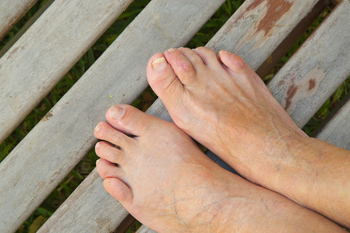
Lansdowne, PA
(610) 626-3338

Lansdowne, PA
(610) 626-3338
 Ingrown toenails can occur in two different ways. Either the edge of the toenail grows into the skin, or the skin grows over the toenail. Signs of ingrown toenails may include swelling and redness on the sides of the toenail, and if infected, pus may drain from the area as well. Ingrown toenails can be caused due to a variety of factors that can include tightly-fitted shoes, thickened toenails, hereditary factors, and abnormally shaped toenails. While experiencing an ingrown toenail may be painful, there are many solutions to help relieve the pain. This can include wearing properly fitting shoes, trimming the toenails straight across and not too short, and by not digging into the sides of the toenail. If the pain persists, or if there is an infection, it is important that you consult with a podiatrist in order to prevent further complications.
Ingrown toenails can occur in two different ways. Either the edge of the toenail grows into the skin, or the skin grows over the toenail. Signs of ingrown toenails may include swelling and redness on the sides of the toenail, and if infected, pus may drain from the area as well. Ingrown toenails can be caused due to a variety of factors that can include tightly-fitted shoes, thickened toenails, hereditary factors, and abnormally shaped toenails. While experiencing an ingrown toenail may be painful, there are many solutions to help relieve the pain. This can include wearing properly fitting shoes, trimming the toenails straight across and not too short, and by not digging into the sides of the toenail. If the pain persists, or if there is an infection, it is important that you consult with a podiatrist in order to prevent further complications.
Ingrown toenails may initially present themselves as a minor discomfort, but they may progress into an infection in the skin without proper treatment. For more information about ingrown toenails, contact Dr. George Yarnell of Pennsylvania. Our doctor can provide the care you need to keep you pain-free and on your feet.
Ingrown Toenails
Ingrown toenails are caused when the corner or side of a toenail grows into the soft flesh surrounding it. They often result in redness, swelling, pain, and in some cases, infection. This condition typically affects the big toe and may recur if it is not treated properly.
Causes
You are more likely to develop an ingrown toenail if you are obese, have diabetes, arthritis, or have any fungal infection in your nails. Additionally, people who have foot or toe deformities are at a higher risk of developing an ingrown toenail.
Symptoms
Some symptoms of ingrown toenails are redness, swelling, and pain. In rare cases, there may be a yellowish drainage coming from the nail.
Treatment
Ignoring an ingrown toenail can have serious complications. Infections of the nail border can progress to a deeper soft-tissue infection, which can then turn into a bone infection. You should always speak with your podiatrist if you suspect you have an ingrown toenail, especially if you have diabetes or poor circulation.
If you have any questions, please feel free to contact our office located in Lansdowne, PA . We offer the newest diagnostic and treatment technologies for all your foot care needs.